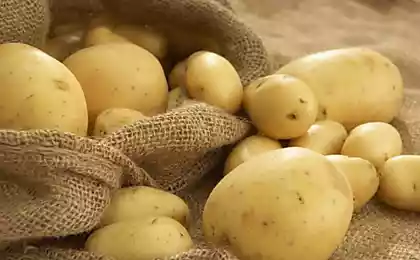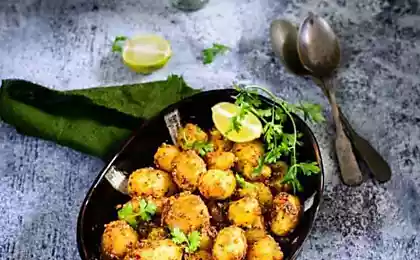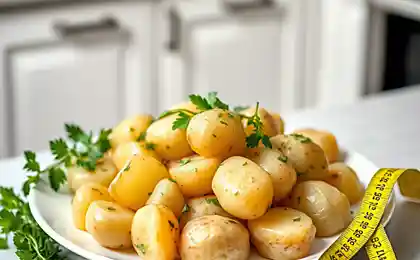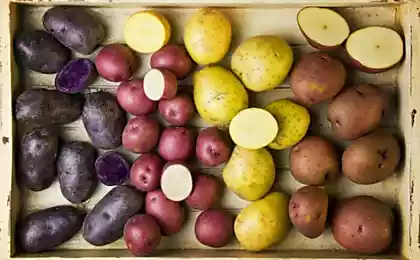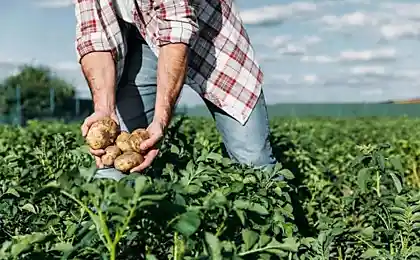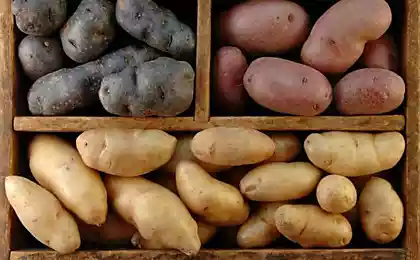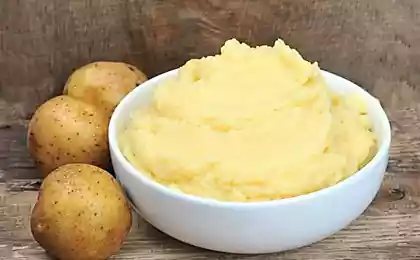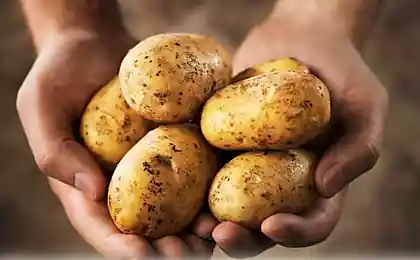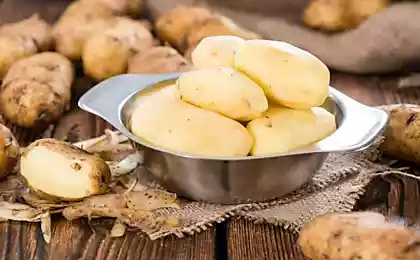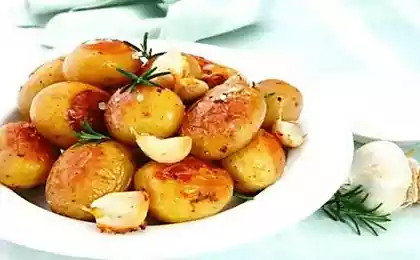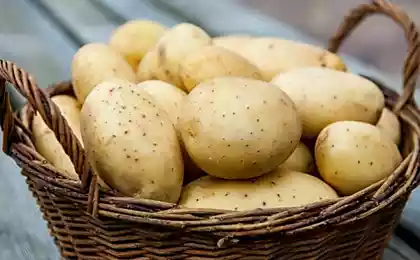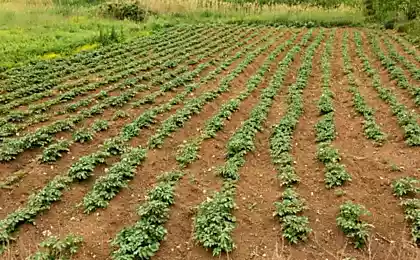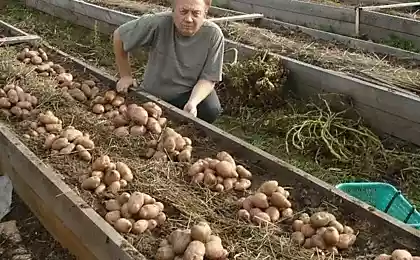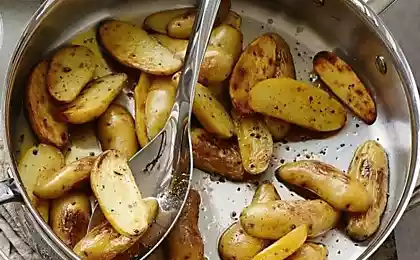185
Potato planting collapsed without rubbing according to the Gordeev method
A good crop of potatoes, it turns out, can be obtained even from a small plot of land, if you grow tubers according to the method of the Gordeev family.

No doubt, potatoes are our second bread, but with an average yield of about 150 kg from 100 square meters, many gardeners began to refuse to plant it. Hard, expensive and also not very profitable.

At the same time, Evgeny and Tatiana Gordeev manage to get 600 and even 700 kg per hundred with a three-fold reduction in labor costs. "Site" We share the details of this interesting technology.
The whole process of growing Gordeyeva was conditionally divided into 7 stages.
To prevent pests and diseases from accumulating in the soil, the Gordeevs use a three-year crop rotation. And plant tubers on the same site no earlier than in 2 years.
In the summer, according to their method, we mulch the garden with hay. In autumn, we dig it with the remains of hay or make trampled cow dung and compost of our own preparation.
Preparation of the site in spring, we make complex fertilizer (nitrogen, phosphorus and potassium) at the rate of 2-3 kg for each hundredth of the garden. For the sealing of fertilizers, the plot is treated with rakes.
We choose for every 100 square meters 500-600 potatoes with full sprouts. A couple of days before landing, the selected tubers should be taken to the veranda with a temperature of at least 7-8 degrees Celsius.
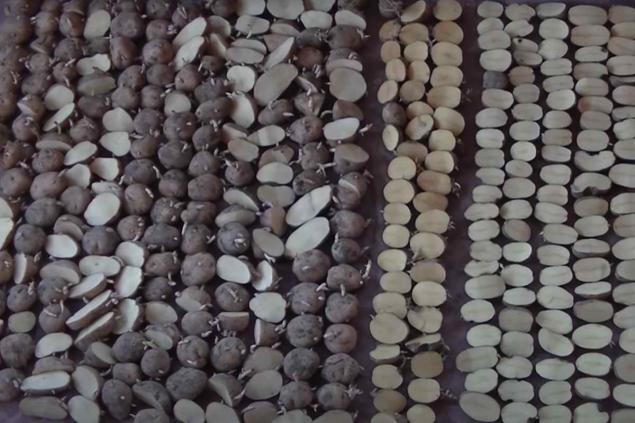
Next, they need to be covered with several layers of bags to allow them to germinate and prevent exposure to sunlight. After all, green potatoes will have to be thrown away.
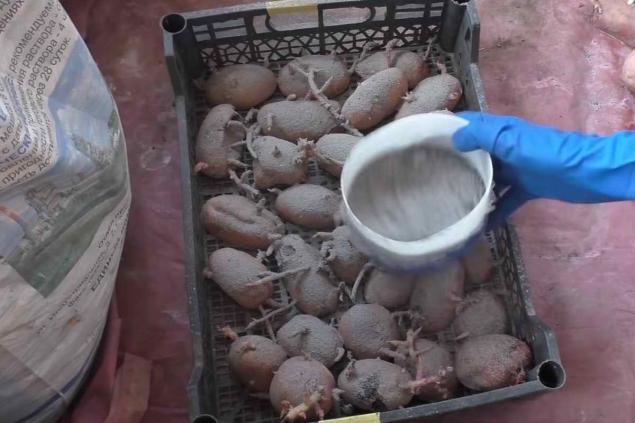
Sick and rotten tubers should be taken away in the garbage. Cut into parts tubers need to be dried and sprinkled with ash and ash, so that a durable protective layer is formed on the cuts.
With an interval of 80 cm, we mark the beginning of the rows on the ground. We have rows from south to north.

Along the cord along the marking line, we form smooth grooves with a depth of 20 cm.

Next, loosen the soil at the bottom of the grooves to a depth of 10-15 cm. At the next operation, the prepared potatoes are distributed in rows down.

The distance between tubers is 25 cm for late and 20 cm for early potatoes.
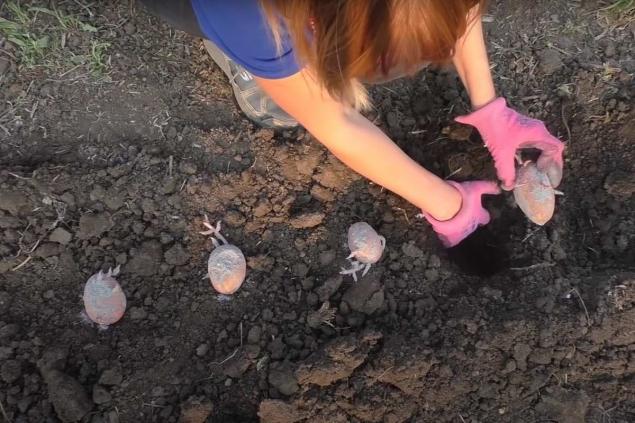
The depth of filling tubers corresponds to the layer of crushed soil, the same 10-15 cm.

After burying the first three rows, we begin to fall asleep in the grooves half-interrupted manure. The rate of application is 800 kg per hundredth. Here are all the landing operations: cutting grooves, loosening, distribution of tubers in grooves, instillation, application of organic matter, watering.
After the appearance of shoots, when the rows are already clearly visible, we conduct a single weeding with accompanying loosening.
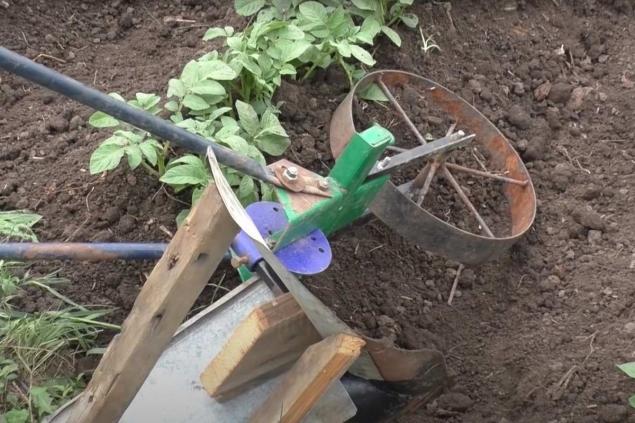
When all the shoots have risen, we mulch between rows with hay and water them so that the hay is compacted.

Mulching brings 4 benefits at once: less moisture loss, the root system of potatoes does not overheat, there are no weeds, hay sheds and fertilizes the land with organic matter.
Tubers begin to form during flowering, and reach their maximum size when the top turns yellow and dries. Between these events, part of the harvest is selected for food.

When the whole top is dry, we dig first the early and then the late potatoes.
150852
Immediately sort into two fractions: for food and for landing. We put it in a heap for drying.
Preparation of the site for other crops Before autumn digging, we completely clean the site from the top. Botva is useful for sheltering a bed with garlic for the winter. Before digging up the site, we carefully consider the planting plan for next year. It depends on what fertilizers need to be brought under dugout.
This is how a small garden produces a good potato harvest. We wish you good harvests, dear readers!

No doubt, potatoes are our second bread, but with an average yield of about 150 kg from 100 square meters, many gardeners began to refuse to plant it. Hard, expensive and also not very profitable.

At the same time, Evgeny and Tatiana Gordeev manage to get 600 and even 700 kg per hundred with a three-fold reduction in labor costs. "Site" We share the details of this interesting technology.
The whole process of growing Gordeyeva was conditionally divided into 7 stages.
To prevent pests and diseases from accumulating in the soil, the Gordeevs use a three-year crop rotation. And plant tubers on the same site no earlier than in 2 years.
In the summer, according to their method, we mulch the garden with hay. In autumn, we dig it with the remains of hay or make trampled cow dung and compost of our own preparation.
Preparation of the site in spring, we make complex fertilizer (nitrogen, phosphorus and potassium) at the rate of 2-3 kg for each hundredth of the garden. For the sealing of fertilizers, the plot is treated with rakes.
We choose for every 100 square meters 500-600 potatoes with full sprouts. A couple of days before landing, the selected tubers should be taken to the veranda with a temperature of at least 7-8 degrees Celsius.

Next, they need to be covered with several layers of bags to allow them to germinate and prevent exposure to sunlight. After all, green potatoes will have to be thrown away.

Sick and rotten tubers should be taken away in the garbage. Cut into parts tubers need to be dried and sprinkled with ash and ash, so that a durable protective layer is formed on the cuts.
With an interval of 80 cm, we mark the beginning of the rows on the ground. We have rows from south to north.

Along the cord along the marking line, we form smooth grooves with a depth of 20 cm.

Next, loosen the soil at the bottom of the grooves to a depth of 10-15 cm. At the next operation, the prepared potatoes are distributed in rows down.

The distance between tubers is 25 cm for late and 20 cm for early potatoes.

The depth of filling tubers corresponds to the layer of crushed soil, the same 10-15 cm.

After burying the first three rows, we begin to fall asleep in the grooves half-interrupted manure. The rate of application is 800 kg per hundredth. Here are all the landing operations: cutting grooves, loosening, distribution of tubers in grooves, instillation, application of organic matter, watering.
After the appearance of shoots, when the rows are already clearly visible, we conduct a single weeding with accompanying loosening.

When all the shoots have risen, we mulch between rows with hay and water them so that the hay is compacted.

Mulching brings 4 benefits at once: less moisture loss, the root system of potatoes does not overheat, there are no weeds, hay sheds and fertilizes the land with organic matter.
Tubers begin to form during flowering, and reach their maximum size when the top turns yellow and dries. Between these events, part of the harvest is selected for food.

When the whole top is dry, we dig first the early and then the late potatoes.
150852
Immediately sort into two fractions: for food and for landing. We put it in a heap for drying.
Preparation of the site for other crops Before autumn digging, we completely clean the site from the top. Botva is useful for sheltering a bed with garlic for the winter. Before digging up the site, we carefully consider the planting plan for next year. It depends on what fertilizers need to be brought under dugout.
This is how a small garden produces a good potato harvest. We wish you good harvests, dear readers!
Why there is less calcium in cottage cheese than in milk
Rules for washing reusable protective masks

